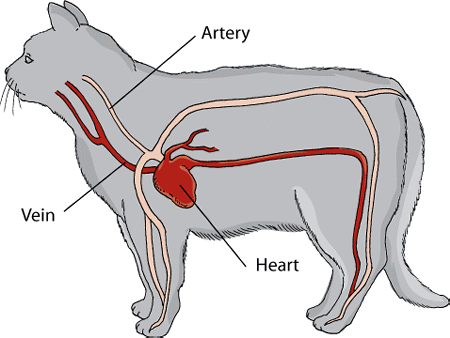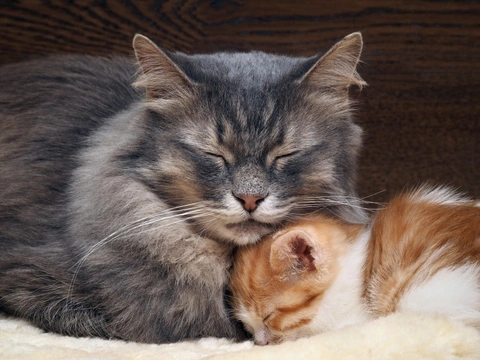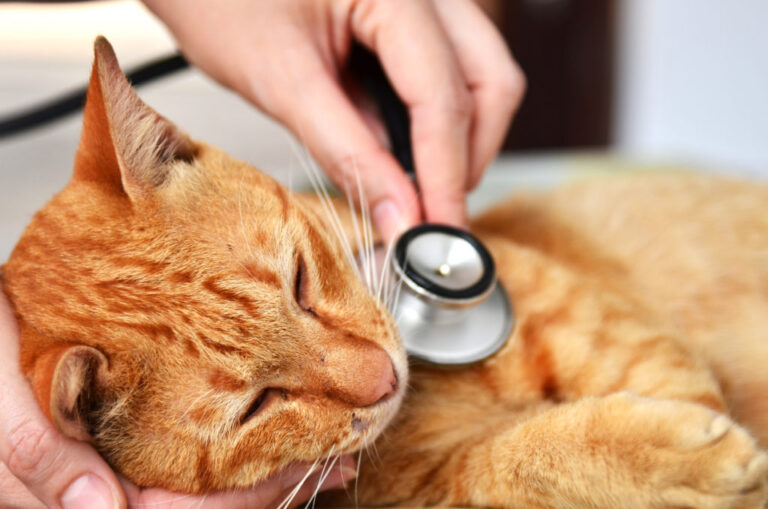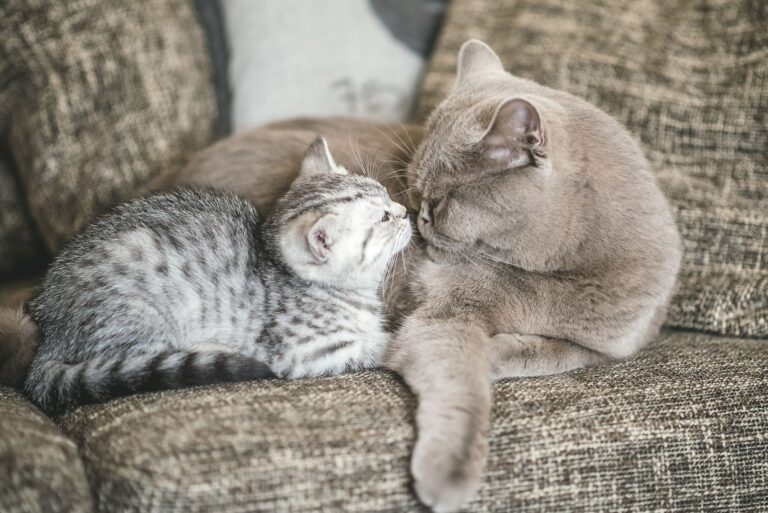Cardiovascular system in cats
Anatomy of the Feline Heart: Understanding the Structure and Function
The feline heart is a complex organ that plays a crucial role in the overall well-being of a cat. It is located behind the sternum, slightly to the left of the midline. The heart is composed of four chambers: two atria and two ventricles. The atria receive blood from the body and lungs, while the ventricles pump the blood out to the rest of the body. This intricate structure ensures the proper circulation of oxygenated blood throughout the feline body.
Within the heart, there are various valves that help regulate the flow of blood. These valves prevent backflow of blood and ensure that it moves in the correct direction. The mitral valve and the tricuspid valve control the flow between the atria and ventricles, while the aortic valve and the pulmonary valve regulate blood flow out of the heart. This intricate system of valves and chambers work together harmoniously to maintain a healthy and efficient circulation in the feline body. Understanding the structure of the feline heart is essential in comprehending its intricate functions and the potential disorders that can affect it.
Blood Vessels in Cats: A Closer Look at Arteries, Veins, and Capillaries

Arteries, veins, and capillaries are vital components of the feline circulatory system, playing a crucial role in the transport of blood throughout the body. Arteries are the large vessels responsible for carrying oxygenated blood away from the heart and distributing it to various organs and tissues. It is important to note that arteries possess thick, muscular walls that help maintain blood pressure as the blood travels through them. This allows for efficient delivery of oxygen and vital nutrients to every part of the feline body.
On the other hand, veins have thinner walls compared to arteries and are responsible for returning deoxygenated blood back to the heart. Unlike arteries, veins rely on valves to prevent the backflow of blood as it makes its way towards the heart. This mechanism ensures that blood is efficiently transported against gravity and towards the lungs for oxygenation. Veins are also more numerous and can be found in a intricate network within the feline body, allowing for the collection of blood from tissues and organs before it returns to the heart.
Cardiac Cycle in Felines: How the Heart Pumps Blood Efficiently
The cardiac cycle in felines is a fascinating process that allows their hearts to efficiently pump blood throughout their bodies. This cycle consists of two main phases: diastole and systole. During diastole, the heart relaxes and fills with oxygen-rich blood from the veins. This blood flows into the atria, the upper chambers of the heart, and then passes into the ventricles, the lower chambers. The ventricles then contract during systole, pumping the blood out of the heart and into the arteries, where it will be distributed to the rest of the body.
To ensure the heart pumps blood efficiently, there are valves located between the chambers that prevent backflow. These valves open and close in coordination with the contraction and relaxation of the heart. The tricuspid valve separates the right atrium and ventricle, while the mitral valve separates the left atrium and ventricle. Additionally, the aortic and pulmonary valves are situated at the exit points of the heart, allowing blood to flow out while preventing it from flowing back in. Through this precisely timed process, the feline heart effectively circulates oxygen and nutrients to all the organs and tissues in the body, supporting their overall health and function.
Common Cardiovascular Disorders in Cats: Recognizing Symptoms and Seeking Treatment
Feline cardiovascular disorders can often go unnoticed due to the subtle nature of symptoms. However, recognizing these signs early on is crucial for prompt intervention and treatment. One common disorder is feline arterial thromboembolism, which occurs when a blood clot lodges in a major artery, usually in the hind limbs. Cats affected by this condition may exhibit sudden lameness, paralysis, pain, and cold limbs. Additionally, they may display decreased appetite, reluctance to move, or vocalization of distress. If you observe any of these symptoms in your feline companion, it is essential to seek immediate veterinary attention to prevent further complications and improve prognosis.
Another disorder to be aware of is hypertrophic cardiomyopathy, a condition characterized by the thickening of the heart muscle. This disorder is often hereditary and most commonly affects middle-aged to senior cats. Cats with hypertrophic cardiomyopathy may demonstrate lethargy, coughing, difficulty breathing, or sudden collapse. Furthermore, they may experience poor appetite, weight loss, or fluid accumulation in the abdomen. Due to the nonspecific nature of these symptoms, it is vital to consult with your veterinarian who can perform diagnostic tests, such as echocardiography, to accurately diagnose and manage the condition.
Hypertension in Cats: Causes, Risks, and Management Strategies
Hypertension, or high blood pressure, is a condition that can affect cats just as it does humans. While it is more commonly diagnosed in older cats, it can occur at any age. The causes of hypertension in cats can be varied. One common cause is underlying kidney disease, which can lead to an increase in blood pressure. Other factors such as obesity, a sedentary lifestyle, and certain medications can also contribute to the development of hypertension in cats. It is important for cat owners to be aware of the potential risks and take proactive steps to manage this condition.
The risks associated with hypertension in cats should not be underestimated. High blood pressure can strain the heart, leading to heart disease and potentially putting the cat’s life at risk. Additionally, hypertension can damage the blood vessels, kidneys, and other organs, impacting their proper functioning. Cats with hypertension may exhibit symptoms such as increased thirst, frequent urination, weight loss, and changes in behavior. If left untreated, hypertension can lead to serious complications. Therefore, early detection and prompt management are essential. Management strategies for hypertension in cats often involve a combination of lifestyle modifications, dietary changes, and medication. Consulting with a veterinarian is crucial in determining the most appropriate treatment plan for your feline friend.
Understanding Heart Murmurs in Cats: Types, Evaluation, and Potential Implications
Heart murmurs in cats refer to abnormal or additional sounds that can be heard during the examination of their heart. These murmurs can be indicative of an underlying heart condition or disorder and can vary in their types and potential implications. It is crucial for cat owners and veterinarians to understand the different types of heart murmurs, the evaluation process, and the potential implications they may have on a cat’s overall health.
There are two main types of heart murmurs that can occur in cats: innocent and pathological murmurs. Innocent murmurs are typically benign and commonly found in kittens or young cats. They occur due to the turbulence of blood flow through the heart as it develops and grows. Pathological murmurs, on the other hand, are caused by an abnormality within the heart, such as a structural defect, valve dysfunction, or abnormal blood flow. These murmurs may indicate the presence of a heart condition or disease that requires further evaluation and treatment. Without proper evaluation, it can be challenging to determine the exact cause and potential implications of a heart murmur in a cat.
Feline Heart Disease: Exploring Different Conditions and Their Impact on Cats
Feline heart disease encompasses a range of conditions that affect the structure and function of a cat’s heart. These conditions can have a significant impact on a cat’s overall health and well-being. One common condition is hypertrophic cardiomyopathy, which is characterized by the thickening of the heart muscle. This can lead to improper functioning of the heart and may result in symptoms such as difficulty breathing, lethargy, and poor exercise tolerance. Another condition is dilated cardiomyopathy, which involves the enlargement of the heart chambers. This condition often leads to a weakened heart muscle and can cause symptoms such as coughing, increased respiratory rate, and fluid accumulation in the lungs.
Other forms of feline heart disease include mitral valve disease, which affects the valve between the left atrium and left ventricle, and feline arterial thromboembolism, which occurs when a blood clot blocks a major artery. Both of these conditions can have severe implications for a cat’s health and may lead to symptoms such as pain, hind limb paralysis, and respiratory distress. It is important for cat owners to be aware of the different conditions and their potential impact on their furry companions. By recognizing the signs and seeking prompt veterinary care, owners can help manage and improve their cat’s quality of life in the face of feline heart disease.
Diagnostic Tools for Assessing Feline Cardiovascular Health: X-rays, Echocardiography, and More
Diagnostic tools play a crucial role in assessing the cardiovascular health of our feline companions. X-rays, also known as radiographs, are commonly used to visualize the internal structure of the heart and surrounding blood vessels. Utilizing a small dose of radiation, X-rays provide valuable information about the size, shape, and condition of the heart.
Echocardiography, on the other hand, employs sound waves to create detailed images of the heart’s structures and its function. This non-invasive technique allows veterinarians to assess the blood flow, measure heart chambers, and evaluate the thickness of the heart walls. Echocardiography provides valuable insights into abnormalities in the heart’s structure, such as dilated chambers or thickened walls, and helps diagnose conditions like heart murmurs and congestive heart failure.
In addition to X-rays and echocardiography, there are other diagnostic tools available to evaluate feline cardiovascular health. These include electrocardiography (ECG or EKG), which records the heart’s electrical activity, and blood tests to assess specific cardiac biomarkers. By combining the findings of these diagnostic tools, veterinarians can obtain a comprehensive understanding of the cat’s heart health, identify underlying conditions, and determine the most appropriate treatment plans.
What is the anatomy of the feline heart?
The feline heart is a muscular organ located in the chest cavity. It consists of four chambers: two atria and two ventricles. The heart is responsible for pumping blood throughout the body.
Can you explain the blood vessels in cats?
Cats have a complex network of blood vessels that includes arteries, veins, and capillaries. Arteries carry oxygenated blood away from the heart to the body’s tissues, while veins transport deoxygenated blood back to the heart. Capillaries are tiny blood vessels that connect arteries and veins, allowing for the exchange of oxygen, nutrients, and waste products.
How does the cardiac cycle work in felines?
The cardiac cycle refers to the series of events that occur during one heartbeat. In felines, the heart contracts and relaxes to pump blood efficiently. The atria contract first, filling the ventricles with blood. The ventricles then contract, pushing blood out of the heart. The relaxation phase allows the chambers to refill with blood, and the cycle repeats.
What are some common cardiovascular disorders in cats?
Cats can experience various cardiovascular disorders, including heart murmurs, hypertrophic cardiomyopathy, dilated cardiomyopathy, and congestive heart failure. These conditions can cause symptoms such as coughing, difficulty breathing, and lethargy.
What causes hypertension in cats?
Hypertension, or high blood pressure, in cats can have various causes, including kidney disease, thyroid disease, and obesity. It can also be secondary to other underlying cardiovascular conditions.
How are heart murmurs in cats evaluated?
Heart murmurs in cats are evaluated through a thorough physical examination and diagnostic tests such as echocardiography. The type, intensity, and location of the heart murmur can provide valuable information about its potential implications and the need for further treatment.
What are some different conditions of feline heart disease?
Feline heart disease encompasses various conditions, including hypertrophic cardiomyopathy, dilated cardiomyopathy, restrictive cardiomyopathy, and heartworm disease. Each condition has its own effects on the heart and overall health of cats.
What diagnostic tools are used to assess feline cardiovascular health?
Diagnostic tools commonly used to assess feline cardiovascular health include X-rays, echocardiography, electrocardiography, and blood tests. These tools help veterinarians evaluate the structure and function of the heart, identify abnormalities, and determine the most suitable treatment options.







